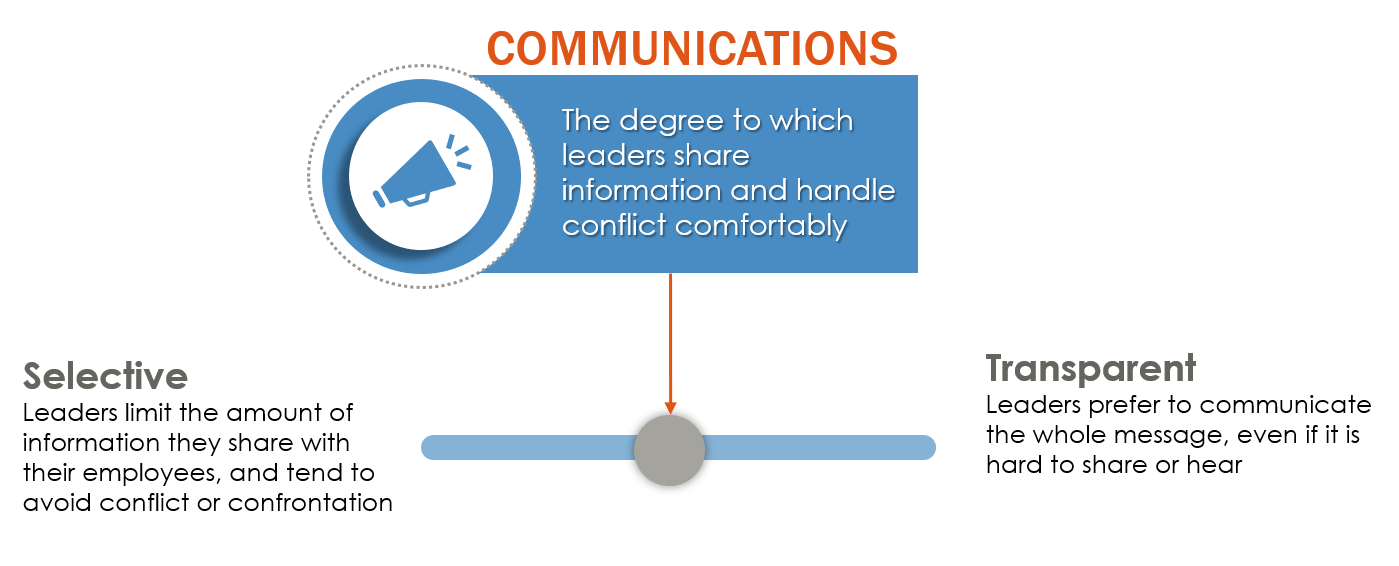Each of these aspects are embedded in American anthropologist Edward Hall’s work, including his concept of “high-context versus low-context” communications. In high-context communications, very few words are shared, but both sides of the exchange share a lot of meaning based on shared backgrounds and experiences; nonverbal communications carry as many clues and meaning (context) as verbal clues. In contrast, low-context communications require words to be exchanged, as the population lacks the shared history together.
The Secret 7 Culture Conversation: #6 OF 7: COMMUNICATIONS

1) direct vs. indirect styles; 2) comfort (or not) with conflict and confrontation, and 3) the level of information sharing from senior leadership to all employees.
Most people around the world naturally default to a high-context style of communicating. Neighbors, villages, students who go to the same school for a long time and who often go on to work in large conglomerate companies together (think Japan, historically) – all communicate based on a shared history and contextual understanding. Interestingly, it is often in cultures that have been built on immigration (whereby people from multiple ethnicities and diverse nationalities come together in a “new land”) where we see the greatest need to reduce the context of speech, adopting a “low-context” style of communications (i.e., mostly verbal) until the community builds up adequate history to “earn the right” to communicate with fewer words.
As advisors, we seek first to understand an organization’s cultural approach to communicating, particularly how open and transparent they are with information, especially with bad news. Unfortunately, we routinely see in much of our client work a cultural propensity to withhold information, based on senior leadership’s determination of what employees “need” to know.
It is our belief that organizations with high employee engagement retention scores, where leaders are grown and developed from the inside, and where employees feel they are trusted and respected are often the organizations that tend to be overly comfortable communicating with greater levels of transparency in their communications.
In addition, high-performing cultures almost always have a higher degree of comfort in creating environments where people can spar/debate/dialogue/discuss areas of disagreement, en route to building a better solution to a common challenge. Conflict is not seen as personal, but more a chance to work through an issue which often makes the larger organization stronger and the outcome better.
Why don’t more organizations and their senior leaders feel comfortable sharing more information? Is it perhaps due to the legal advice they get advising them to limit the information shared to minimize exposure and risk?
We believe risk management concerns are often very real; once something is in print, online or verbally spoken in a town hall, social media will likely perpetuate the message – often out of context – hurting more than helping the original content and purpose of the message.
However, we also think many leaders have a general lack of trust that employees can handle the total message. We are reminded of that famous scene from the movie “A Few Good Men.” Tom Cruise is pressing Jack Nicholson, saying “I want the truth.” And to that, Jack slams his hand on the witness stand, stands and yells, “You can’t handle the truth!” In our experience, employees “handle the truth” more than top leadership is led to believe. And in the absence of sharing the whole truth, employees will very often make up the rest of the story on their own; that can often do more damage than having the actual facts.
It would be irresponsible to not point out some of the common habits of highly successful organizations who have adopted a less direct means of communicating as well. In certain parts of the world, open and honest transparency can run into significant conflict with either certain existing structures, be it unions (works councils), government requirements or societal norms.
It can also “fly in the face” of certain organizational norms, based on senior leaders protecting their key constituent groups. One example would be in certain organizational structures in parts of Asia, the Middle East or Latin America, where leaders will serve as buffers between external forces impacting the health of a company and what they perceive the employees need to know to do their best work.
To enable superior results, leaders must be intentional around choosing the best approach to communications inside their organizations, and they must get comfortable addressing conflict and being challenged.
So, while each organization needs to decide what works best for it, in our experience across over 200 projects in more than 40 countries, we believe many of the strongest organizations with the highest employee engagement have open cultures represented by healthy debate, comfort with difficult conversations and conflict, and leadership at the top who trust their employees with “the truth, the whole truth, and nothing but the truth.”
For more information on The Secret 7, or if you would like to receive a unique survey link (custom URL), free for your company/organization, please click here and complete the form.












